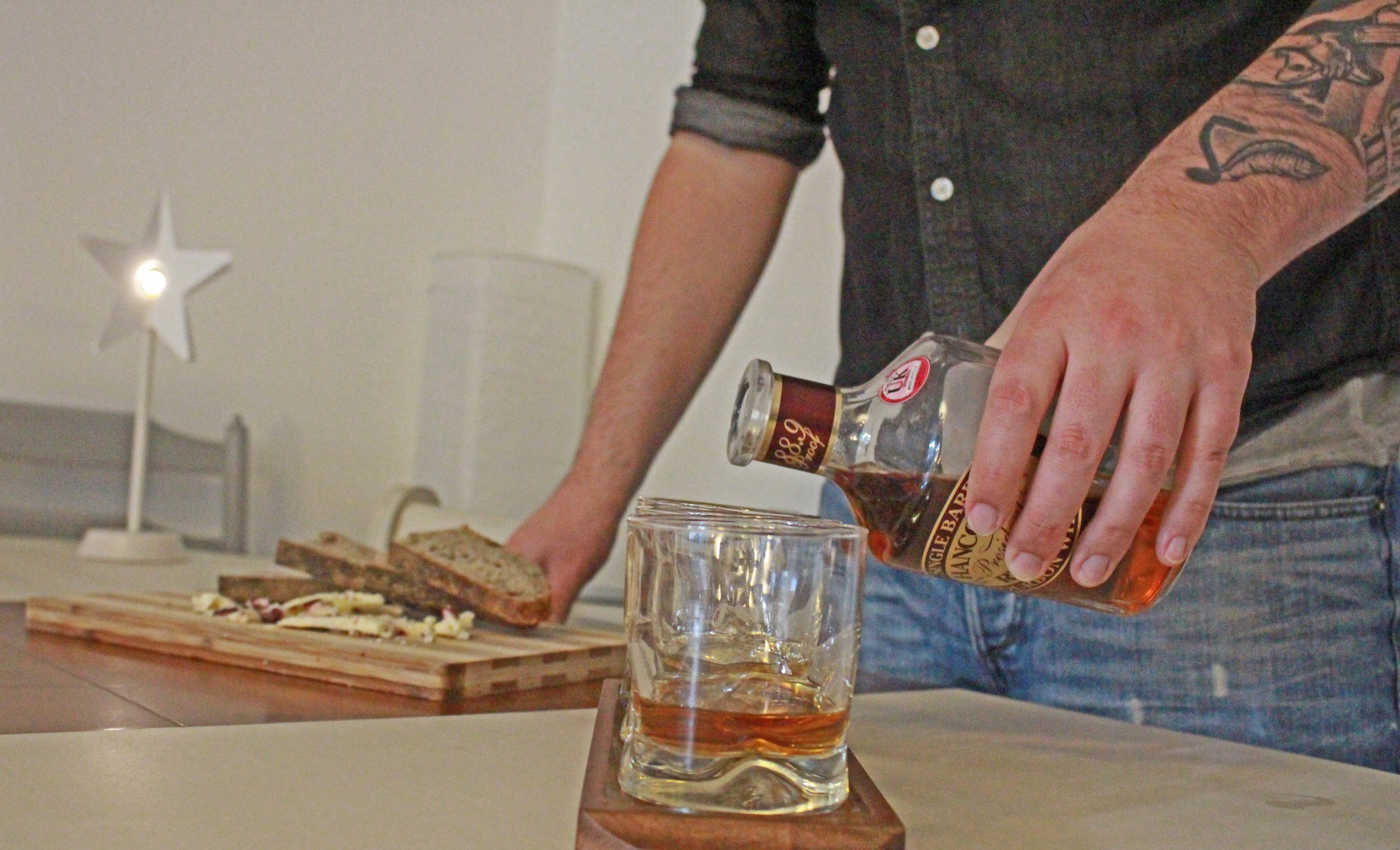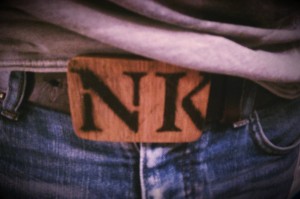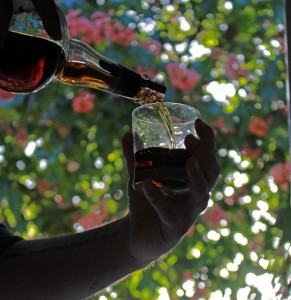 Wood is very important to whiskey. So important, in fact, that if it hasn’t touched wood, it isn’t whiskey. And that includes unaged whiskey – known as ‘white dog’ – which, to earn the name, has to have come into contact with wood for at least a short time. So whether the spirit has spent eighteen years in a number of separate barrels, or two years in one barrel (two years is the minimum ageing time for a whiskey to be labelled a ‘straight’ bourbon), or simply poured through the prongs of one of those little wooden forks you get at a seaside chippy (I doubt much whiskey is aged that way…), it’s the wood that makes the whiskey.
Wood is very important to whiskey. So important, in fact, that if it hasn’t touched wood, it isn’t whiskey. And that includes unaged whiskey – known as ‘white dog’ – which, to earn the name, has to have come into contact with wood for at least a short time. So whether the spirit has spent eighteen years in a number of separate barrels, or two years in one barrel (two years is the minimum ageing time for a whiskey to be labelled a ‘straight’ bourbon), or simply poured through the prongs of one of those little wooden forks you get at a seaside chippy (I doubt much whiskey is aged that way…), it’s the wood that makes the whiskey.
One time I had a whiskey delivered to me at work and a colleague asked how old the whiskey was. I told him it was six years old. He responded with “Oh, just a cheap one then”. That’s because in the UK we’re used to hearing about the age of scotch, which is typically more like 10, 12, 15, 18 years, or even 70 years if you can choose between spending your money on a bottle of Glenlivet 1940 or a handful of jet-skis.
The reason you can’t compare the ages of scotch and bourbon is that bourbon, by legal definition, has to be aged in new, charred oak barrels. New, meaning the barrel hasn’t been used before and charred meaning literally that. Being aged in a new barrel means that the spirit draws a lot more flavour from the wood in a much shorter time-span. Scotch, on the other hand, is almost always aged in barrels which have previously held whiskey; in fact a lot of scotch is aged in ex-bourbon barrels! Lets face it, the bourbon distilleries aren’t going to use them again, so why not send them to Scotland? (Nb. – some scotches are aged in new barrels and tend to be labelled ‘Virgin Oak’, like the Auchentoshan Virgin Oak which is a nice one.)
From grain to gullet, the whiskey spends most of its life in a wooden barrel (or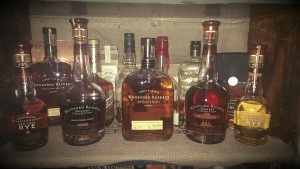 even several subsequent barrels), so unsurprisingly that barrel has an enormous impact on the flavour. To demonstrate this, I’m going to take you on my personal favourite walk through the woods, with Woodford Reserve.
even several subsequent barrels), so unsurprisingly that barrel has an enormous impact on the flavour. To demonstrate this, I’m going to take you on my personal favourite walk through the woods, with Woodford Reserve.
As I’ve said before, Woodford Reserve Distiller’s Select was one of my first bourbons and still remains my go-to whiskey. The nose is bold, sweet and warming, and if you’ve the faintest idea of what oak wood smells like you’ll pick it up in abundance on giving Woodford a sniff. The flavour is wonderfully thick, woody and caramelly on the palate, with hints of pepper, cinnamon and almond. I don’t know how else to describe it, but it has more flavour per cubic meter than any other bourbon you can get for the same price.
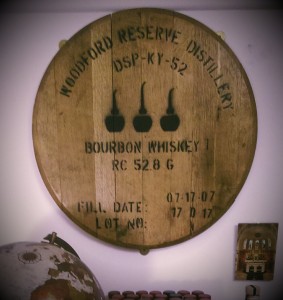
Bourbon barrelheads like this are pretty common collectables State-side, but pretty rare over here. A friend brought this one back for me after a business trip to the US.
How do they do it? Well, it’s true that the charring process helps the whiskey to absorb the essence of the wood and I heard one account that Woodford Reserve are the only distillery to even char the inside of the barrel-head. So maybe that’s it. Or maybe they’re just wizards. Wonderful whiskey wizards.
Either way, there’s a higher sorcery at work here, as the Woodford family offers some excellent opportunities to really see what the wood does to a whiskey. For example, Woodford Reserve Double Oaked – which only became available in the UK about a month after I snuck two bottles past customs on my way back from the States – is produced the same way as normal Woodford but is then ‘finished’ in a second new, heavily charred oak barrel. Literally ‘twice oaked’, its dark and silky nose, with rich port, black cherry, dark chocolate and vanilla, has to be experienced. As does the taste which is smooth and smokey, with tonnes of oak and a chewy treacle mouthfeel.
Maybe you’ve spotted a theme here and are wondering it’s it going to get any more interesting than just ‘oak’ and ‘more oak’. Well there’s good news. See, bourbon has to be aged in charred, oak barrels. But there’s nothing in the rules against finishing it in a barrel made of something else. Enter the Woodford Reserve Master’s Collection. Some of these are easy enough to get hold of in the UK online or in quality establishments and if you only ever get to try one of them, I’d recommend going for the ‘Maple Finish’. As the name suggests, this bourbon has been finished in barrels made from Sugar Maple wood. The result is a fantastically complex, sweet bourbon that smells of roasted chestnuts, candied fruits, brown sugar and rich mahogany, and a taste that’s bursting with demerara sugar, winter spice and chocolate. And the colour of it (see top picture) is just stunning.
I’ll mention two others from the same collection that masterfully showcase the effects of wood. The first is the ‘Seasoned Wood’ edition, which uses barrels that have sat out in the elements for several months. This creates an extraordinary whiskey that packed full of oaky and nutty flavours – walnut and hazelnut, as well as clove and smoked spices.
And lastly, they do a set of two rye whiskeys which come together in a neat little box – which when turned on its side makes an excellent mini-cabinet for 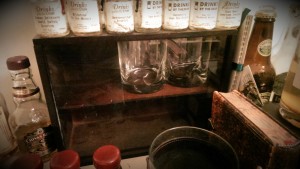 your whiskey glasses! (picture left) – which are different only in one way. One of them has been aged in a ‘new’ cask, just like bourbon. The other has been aged in an ‘aged cask’, just like scotch. To borrow the words of the distillery, being aged in a new barrel creates a more ‘barrel forward’ flavour; the effects of the wood are more pronounced. Being aged in a previously used cask allows the flavour of the grain to come through more, creating a ‘grain forward’ whiskey. Trying these two ryes side by side makes that abundantly clear and enjoyably so for me as I love the flavour of the rye grain. The aged cask rye is a massive eye-opener, with the green-spice toppiness and the minty richness really coming to the fore.
your whiskey glasses! (picture left) – which are different only in one way. One of them has been aged in a ‘new’ cask, just like bourbon. The other has been aged in an ‘aged cask’, just like scotch. To borrow the words of the distillery, being aged in a new barrel creates a more ‘barrel forward’ flavour; the effects of the wood are more pronounced. Being aged in a previously used cask allows the flavour of the grain to come through more, creating a ‘grain forward’ whiskey. Trying these two ryes side by side makes that abundantly clear and enjoyably so for me as I love the flavour of the rye grain. The aged cask rye is a massive eye-opener, with the green-spice toppiness and the minty richness really coming to the fore.
This is far from the last word on wood in this blog, since I’ve already made clear that you can’t discuss whiskey without discussing the barrel it grew up in. But all this leads inexorably to the question: what happens to bourbon barrels when they are to age bourbon no longer? Do they all cross the ocean to age malt? Indeed not. In the US a great many of them are turned into souvenirs, which may be dime-a-dozen in their native land, but are seldom seen here in Blighty. Do you have a bourbon barrel trinket? Get in touch and I’ll add the picture to the gallery below!
